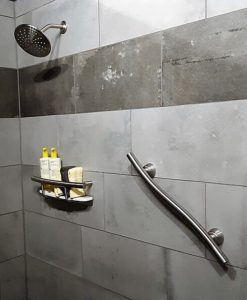 By Melody Birkett
By Melody Birkett
Baby boomers have long been known for their generation’s rebellious streak and challenging of established practices.
Since 2011 when 73 million cohorts began turning 65 at a rate of 10,000 per day, baby boomers—those born between 1946 and 1964—have been fixated on their long-held belief that they would never get “old,” choosing instead to remake options for their retirement years.
Rather than moving into retirement and assisted-living communities like their parents did, Boomers are choosing to stay in their homes and adapt the familiar surroundings to their specific aging needs and interests.
South Tempe resident Linda Arters has been studying the aging-in-place concept since 2006, initially attracted to its focus on safety and security in the home.
“I grew up in a homebuilding family so I have always had an interest in home improvements that will make daily living more comfortable,” explained Arters, a public affairs consultant, certified senior adviser and elder-justice advocate.
“Having been an avid tennis player, I now have arthritis in both knees, so I try to take fall precautions at all times.
Currently, I’m looking into slip-resistant flooring as well as enhanced lighting options for brighter illumination since our eyes age along with our bodies. After 24 years, I guess you can say I’m going to give my home a well-needed ‘face-lift and tummy- tuck.’”

– Photos courtesy Re-Bath and Kitchens
Seventy-three percent of Maricopa County housing units were built prior to 2000; the median age of the housing stock in Tempe is 32 years.
That equates to nearly 1.5 million homes constructed in the pre-digital, pre-Great Recession, pre-energy efficient eras.
Home modifications for aging- in-place is now the fastest growing segment of the residential remodeling industry as more boomers realize the financial and physical benefits.
The latest designs not only look great but are appealing to the active, aging marketplace, those with medical conditions or disabilities, and even families with young children.
Fritzi Gros-Daillon, an approved instructor of the National Association of Home Builders, is a seasoned professional in environmental consulting and aging-in-place home safety and modifications industries. Arters reached out to her for assistance in developing a diversified team of trained Certified Aging-In-Place Specialists professionals in Maricopa County after recognizing the void for servicing the 50-plus marketplace.
“When we look at some universal design features, like a motion-activated faucet, these can work well for those struggling with arthritis to turn a knob and if you’re a five-year old child,” explained Gros- Daillon, the national award-winning author of “Grace and Grit: Insights to Real Life Challenges of Aging for Adult Children and their Parents.”
“This type of faucet works well if you’ve sprained your wrist and you have to use your other hand to get water. We’re moving from the aging-in-place thinking toward this universal design and making these features work for everyone regardless of their age.”
Zero-threshold entries are another nice feature that can accommodate people in wheelchairs but are also great for strollers, walkers, scooters and make easy entry for anyone.
Other home modifications include decorative grab bars, comfort high toilets, zero threshold showers, bigger windows, wider doorways, maintenance-free exteriors and landscaping, and flex space.
“We look at the transitions for people accessing their homes and then transitions between the rooms to make sure there are no tripping hazards,” said Gros-Daillon.
“One of my personal modification favorites includes security lighting, motion sensors, and the new voice-activated systems.
“It’s all about improving the lighting to reduce the tripping hazards in a home.”

